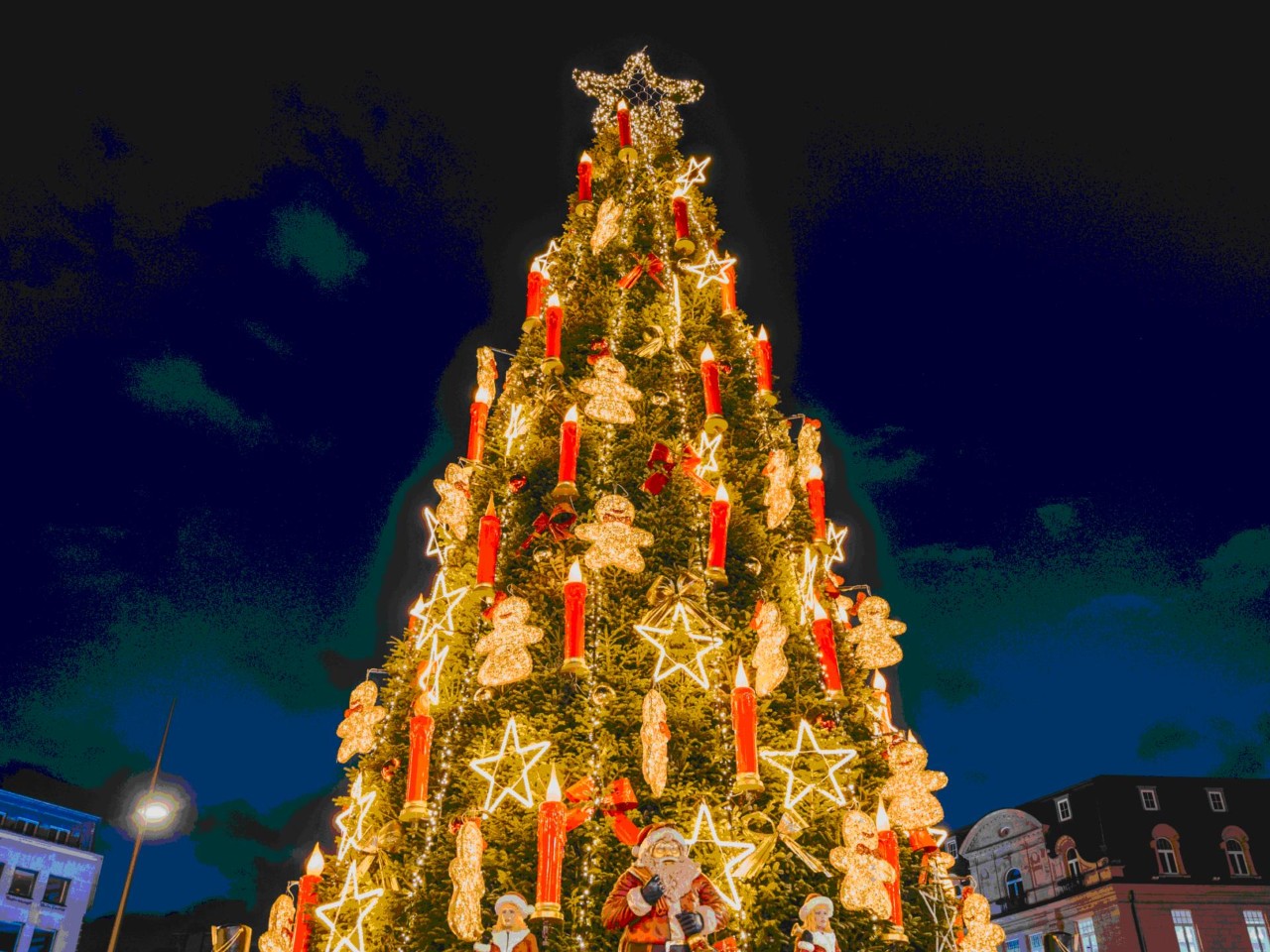Christmas - a time of togetherness

Coming together is what Christmas is all about in Luxembourg. Even though the country is rooted in Christian traditions, Christmas has evolved thanks to the many cultural influences. The cross-community event that it is today embodies the values many Luxembourgers hold dear to their hearts: family, togetherness and thankfulness for the peace we live in. Let us show you our traditions.
Waiting for Christmas time
The run-up towards Christmas is filled with anticipation and much preparation for the festive season.
Numerous Christmas markets, processions, cribs, illuminated streets, decorated shops, concerts and other events create a magical festive atmosphere throughout the country. Luxembourg City, for example, creates a winter festival atmosphere with its Winterlights festival, providing a unifying theme for a whole series of advent festivities: a Christmas Parade, Christmas markets, public concerts, exhibitions and a variety of other events.
In the weeks preceding Christmas, dedicated events are also held in nurseries, fundamental schools, homes for the elderly, sports clubs, etc. Christmas concerts take place in churches, schools and on the Christmas markets adding to the festive pre-Christmas flair that many people enjoy.
At home, families enjoy the preparation of Christmas biscuits and decorations are put up according to each family's tradition:
- Chrëschtbeemercher, the traditional Christmas trees are decorated as long as two or three weeks before Christmas with baubles, light chains and many other kinds of decorations. Traditionally, they stay up until the first week of January, when they will be collected by local associations to be used as firewood at the Buergbrennen, a celebration centred around a huge bonfire.
- The majority of households create or buy an Adventskranz, or advent wreath, made of fir branches, pine, holly or sometimes mistletoe, adorned with four candles. On the fourth Sunday before Christmas, the first candle of the wreath is lit, followed by another one each following Sunday.
- Children pass the time until Christmas by opening windows on their Adventskalenner, a calendar spanning the time from 1 to 24 December. Originally, these calendars contained religious images, but these have now been replaced by biscuits, chocolates or small toys. And are far from limited to children.
And when this atmosphere is enhanced by a snow-covered landscape, Luxembourgers enjoy a perfect Christmas.
Religious celebrations
In Luxembourg, the majority of people are Christians. To celebrate Christmas, practising Christians attend mass — either midnight mass (Metten) on 24 December, or Christmas mass on 25 December. A particularly beautiful midnight mass is celebrated every year at Notre-Dame Cathedral in Luxembourg. After mass, churchgoers take a moment to enjoy each others' company, with a Glühwäin (mulled wine) or other hot drink to keep warm, before going home to prepare for Christmas Day.
In many villages, the Krëppespiller (nativity plays), performed by children of the parish, are one of the highlights of the season. They usually take place in the churches and are attended by large crowds.
While there are certain Luxembourgish traditions and customs, the many foreign communities in Luxembourg have also introduced their own customs to the country.
Coming together as families
Christmas is also a family celebration taking place on 24 (Hellegowend), 25 (Chrëschtdag) and 26 December (Stiefesdag). These three days are traditionally devoted to family get-togethers, but every family has their own way of celebrating. Some gather on the evening of 24 December, while others hold their big Christmas dinner on the 25th. The variety of dishes is as eclectic as the many cultural influences in Luxembourg, including traditional Luxembourgish foods, such as venison, trout or beef.
Of course, handing out and receiving presents is an important part of Christmas. Traditionally, the Crëschtkëndchen (baby Jesus) brings the gifts and leaves them under the Christmas tree. In some families, presents are opened on Christmas Eve (24 December), while in others they are opened on Christmas Day (25 December). Most importantly though, families gather on Christmas Day for an opulent meal and to spend time together.
The final day of Christmas, 26 December, is usually a day of resting, maybe dedicated to meeting friends or visiting family.
Traditional dishes you need to try
Christmas time is also when different traditional (or sometimes less traditional) simple foods are consumed for various occasions:
- Träipen (black pudding) are traditionally associated with the winter months. Accompanied by mashed potatoes and apple sauce, they are a delight.
- Kniddelen (flour dumplings) are a very popular winter dish, simply made with very few ingedients, bus very tasty.
- Gromperekichelcher (potato fritters) are served on every Christmas market, as is Glühwäin (mulled wine) – both are more popular the colder it gets.
- Every bakery sells Boxemännercher in December, brioche buns formed like a human figure that children are especially fond of.
- Finally, a traditionally English recipe has become a hit in Luxembourg: Eggnog. This drink is made of sweetened milk, cream, vanilla, nutmeg and brandy, cognac or rum (or rum aroma for a non-alcoholic variant) and is on sale in most Luxembourgish supermarkets in November and December.
Public holidays and school holidays
Christmas is one of the most important holidays for many Luxembourgers and Chrëschtdag (Christmas Day) on 25 December and Stiefesdag (Boxing Day) on 26 December are legal holidays.
Most shops, banks and businesses close on the afternoon of 24 December and remain closed on 25 and 26 December. Children in fundamental and secondary education, for their part, enjoy 2 weeks of school holidays.
Last update


